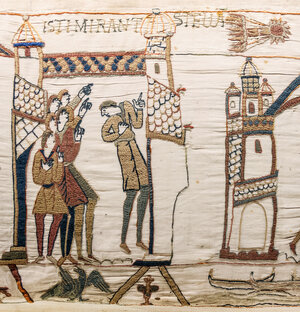The post-Halley era
Giotto’s visit to Comet Halley certainly taught scientists a great deal, but as always with such exploratory missions it also raised new questions. Scientists wanted to learn even more about these fascinating primordial space objects and made calls for more cometary missions.
A few weeks before the launch of Giotto, a so-called ‘Planetary Cornerstone’ mission was proposed in ESA’s long-term scientific programme known as ‘Horizon 2000’. Planetary scientists wanted it to become a Comet-Nucleus Sample Return (CNSR) mission in collaboration with NASA, which would represent a logical next step after Giotto.
In the mid-nineties, it became a purely ESA-led mission and was redefined as a cometary orbiter with a lander. This Rosetta mission was launched on 2 March 2004 and is currently on its way to comet 67P/Churyumov-Gerasimenko, which it will reach in mid-2014.
The motto under which Rosetta’s state-of-the-art payload has been developed is ‘When we can’t bring back a sample to the laboratory, we have to bring the laboratory to the comet’.

Some scientists who had originally criticised fly-by missions to comets, even in the exploratory phase as not providing a good scientific return, were eventually won over by the tremendous success of Giotto and the wealth of data that it and the Vega 1 and 2 spacecraft provided.
Consequently, NASA’s Deep Space 1 mission, launched on 24 October 1998, went on during its extended mission to fly-by Comet Borelly in September 2001.
Three cometary missions then followed as part of NASA’s Discovery programme.
Stardust, launched on 7 February 1999, passed comet Wild 2 on 2 January 2004 at 240 km and collected comet grains that were returned to Earth on 15 January 2006.
It was followed by Contour, a mission to study the diversity of comets by making close fly-bys of at least two of them, like Giotto. Launched on 3 July 2002, Contour was unfortunately lost before it was injected into its interplanetary trajectory.

The third spacecraft Deep Impact, launched on 12 January 2005, fired a projectile into Comet Tempel 1 on 4 July 2005, an event that was monitored by observatories around the world.

Giotto was therefore instrumental in improving the fundamental knowledge about comets. Based on its results and the follow-on missions that it spawned, scientists have gradually learned more and more about these mysterious bodies over the past decades.
But when the images of the various comets are compared, they all look quite different. Scientists do not really understand why yet!
A lot of questions have been answered, but the more they discover, the more they want to know in order to really understand comets, their origin, their physics and their chemistry.
ESA’s Rosetta will be the next spacecraft to visit a comet, in 2014, this time to make detailed, longer-term studies. Based on what ESA has learned so far from these ‘frozen snowballs of mud and ice’, it will certainly be worth the wait!
For more information:
Gerhard Schwehm, ESA Rosetta Project Scientist
E-mail: gerhard.schwehm @ esa.int















 Germany
Germany
 Austria
Austria
 Belgium
Belgium
 Denmark
Denmark
 Spain
Spain
 Estonia
Estonia
 Finland
Finland
 France
France
 Greece
Greece
 Hungary
Hungary
 Ireland
Ireland
 Italy
Italy
 Luxembourg
Luxembourg
 Norway
Norway
 The Netherlands
The Netherlands
 Poland
Poland
 Portugal
Portugal
 Czechia
Czechia
 Romania
Romania
 United Kingdom
United Kingdom
 Slovenia
Slovenia
 Sweden
Sweden
 Switzerland
Switzerland




































